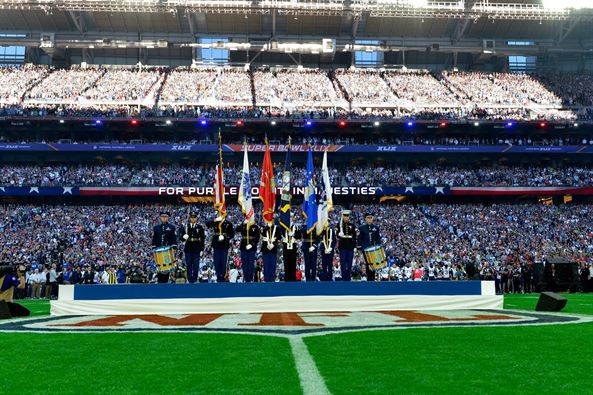Entertainment-based security can be a “unique animal,” as it brings a specific set of challenges supplementing those that come standard with nearly all public safety scenarios — and this boils down to a simple, yet crucial fact: attendees, in most cases, are both present in large numbers and hyper focused on getting their money’s worth from the event in question. When an event is so large, symbolic or publicized that it gets designated by the Secretary of Homeland Security as a National Special Security Event (NSSE), the US Secret Service assumes its mandated role as the lead agency for the design and implementation of the operational security plan. For NSSEs, the Secret Service have developed a core strategy to carry out its security operations, which relies heavily on its established partnerships with law enforcement and public safety officials at the local, state, and federal levels.
There is arguably no better example of an NSSE than a world championship sporting event — especially the Superbowl, where passion, excitement, and tension can intertwine at any moment, creating an almost countless list of possible safety situations — the prevention of rare threats like potential terror attacks to regular event security issues ranging from fans possessing banned materials to fan brawls to logistical challenges related to crowd flow. Paired with increasing threat levels associated with largely attended areas in general, these possibilities warrant strong safety protocol and situational awareness to keep crowds safe.
Of most importance, it needs to be stated that even in an NSSE, the Secret Service are working from the existing security and emergency management plans of the venue, local agencies and related stakeholders. Therefore, assuring that venues have solid plans, personnel and technologies in place on a regular basis makes it less costly and more effective when law enforcement partners arrive to assist.
Reinforcing situational awareness
Almost all sports venues — especially those hosting pro-level events — are comprised of multiple entry points, and this warrants an accelerated need for situational awareness, which in turn allows security teams to quickly address and resolve safety concerns. This is rooted in the ever present need for security responsibility. Preemptive planning is key both logistically and mentally; personnel must have clear protocol in place, but must also be aware of how it will look and what an array of potential situations could look like.
Today, much of this awareness is built via network-based technology, namely a portfolio of cameras situated at every primary entrance and similar area inside and around the venue, which give personnel a comprehensive look at the venue and its attendees. Furthermore, in recent years, events such as the Superbowl have seen an uptick in armed personnel strategically placed both on the ground and at higher vantage points within the vicinity of the event. In fact, last year’s Superbowl match, held in Minneapolis, included the largest amount of on-call federal agents in the event’s history.
Managing a series of crowds
Though the Superbowl draws an almost overwhelming amount of spectators annually, many of these crowds will never actually attend the game itself. Game day security is of the utmost importance, but the aforementioned situational awareness must spread to a variety of other crowds drawn to prior and subsequent celebrations of the event.
For this year’s game, awareness-based planning will venture far beyond the confines of Mercedez-Benz Stadium in Atlanta, with security perimeters crossing into nearby businesses and entities converted into fan spaces and football-themed amusement areas; this has become a standard practice in modern Superbowl events. Major considerations in Minneapolis will include a “Superbowl Experience” theme park (built at the Congress Center) and the pre-game Super Bowl Live concert series, which will take place over six days in Centennial Olympic Park.
This level of crowd management requires above average preparation to ensure both fluidity and continued surveillance of potential threats. During early January, Minneapolis security teams will work diligently to establish temporary structures, including exterior security fencing, with which to maintain order amidst the city’s web of Superbowl-related events. In the context of the game itself, this temporary expansion of oversight will include an enlarged checkpoint perimeter for fans entering the stadium.
At the end of the day, sporting events are intended to be fun and memorable for all in attendance, and a variety of recent tragedies have created an underlying anxiety that can undermine those feelings. For the Superbowl — arguably the king of professional sporting events — these values are especially true. It is up to security and public safety personnel to ensure that attendees are both safe and free to enjoy themselves without worry.
A. Benjamin Mannes, MA, CPP, CESP is a nationally-recognized subject matter expert in public safety and investigations. He is is the former Director, Office of Investigations for the American Board of Internal Medicine, having previously served in both federal and municipal law enforcement & homeland security agencies and as an established Public Safety Consultant. He has served on collegiate academic advisory boards as well as the Executive Board of InfraGard, the FBI-coordinated public-private partnership for infrastructure protection for over six years.
